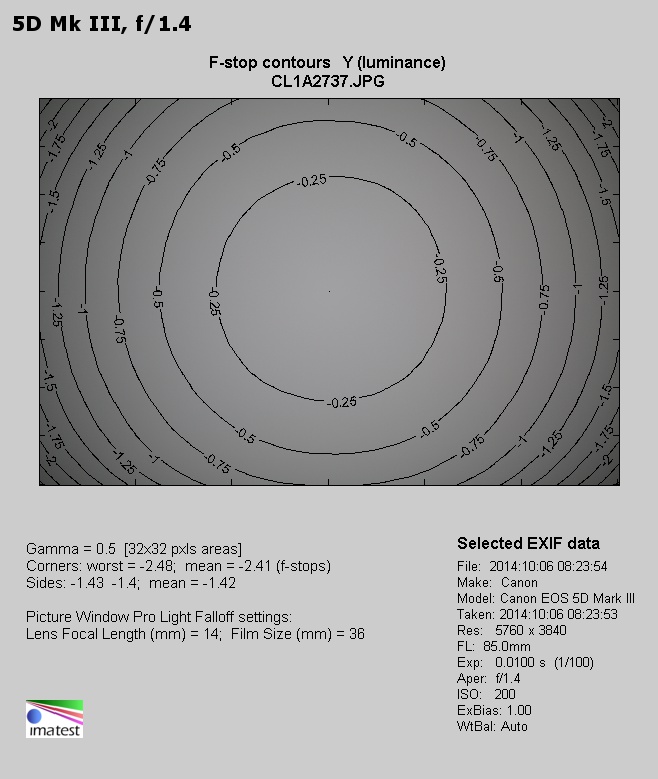Carl Zeiss Otus 85 mm f/1.4
8. Vignetting

There are chances to notice the vignetting only at the maximum relative aperture and even there its level remains moderate, amounting to 24% (-0.79 EV). The problem disappears almost completely by f/2.0, where that aberration reaches just 10% (-0.31 EV).
Please Support UsIf you enjoy our reviews and articles, and you want us to continue our work please, support our website by donating through PayPal. The funds are going to be used for paying our editorial team, renting servers, and equipping our testing studio; only that way we will be able to continue providing you interesting content for free. |
- - - - - - - - - - - - - - - - - - - - - - - - - - - - - - - - - - - - - - - - - - - - - - - -
The appearance of defocused light points the frame corners suggested a lot of vignetting-related problems on full frame. The thumbnails below prove that indeed, these problems can make themselves felt.

At the maximum relative aperture the brightness loss is really noticeable, being 56% (-2.41 EV). Such a result is simply weak, taking into account the dimensions of the lens and the fact that other, much smaller 1.4/85 instruments when wide open had the vignetting on a level closer to 40%, not over 50%.
Fortunately the situation improves swiftly on stopping down the lens. By f/2.0 the light fall-off in the frame corners gets to 35% (-1.27 EV) and by f/2.8 it reaches 15% (-0.48 EV). The vignetting practically disappears by f/4.0 where it is just 6% (-0.19 EV).
 |






